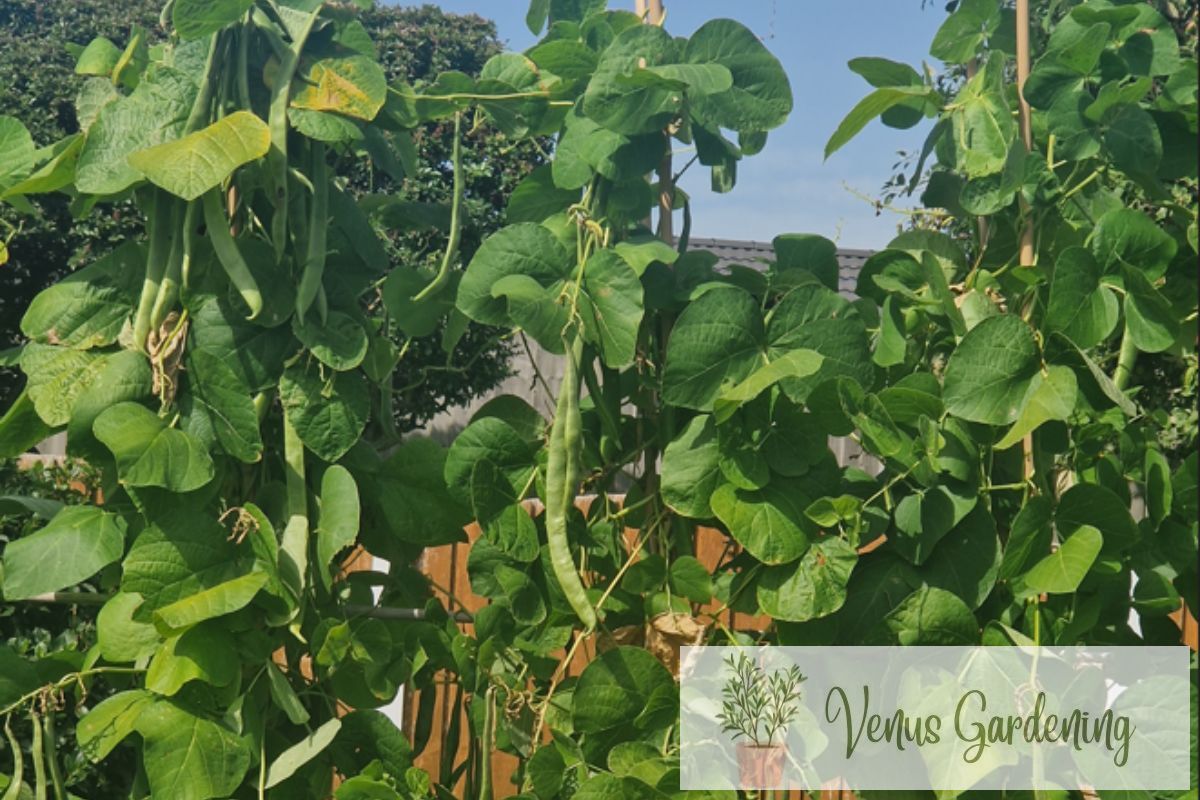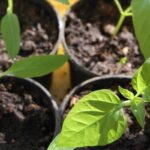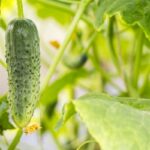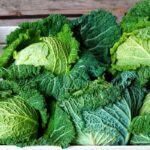Runner beans, synonymous with vibrant growth, ornamental blooms, and generous harvests, are a garden staple for many enthusiasts.
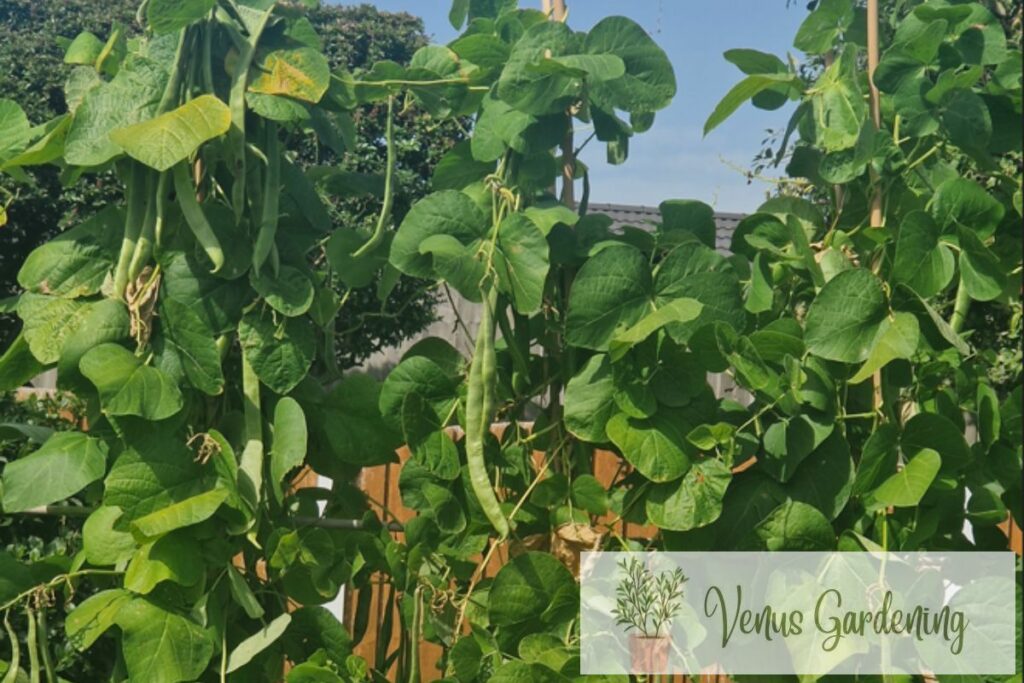
To maximize their potential, it’s paramount to ensure they receive the right nutrients. So, what fertilizer should grace the roots of these leguminous wonders?
A Glimpse Into Runner Beans’ Diet
Before wading into the ocean of fertilizers, it’s fundamental to decode the dietary preferences of runner beans. Intriguingly, these beans form alliances with certain soil bacteria, enabling them to harness atmospheric nitrogen.
Thus, while they’re self-sufficient in nitrogen, they crave:
- Phosphorus: This nutrient is pivotal for a robust root system and facilitates energy transfer.
- Potassium: A catalyst for flower and bean formation, potassium also boosts the plant’s immunity and vigour.
- Trace minerals: Though required in minuscule amounts, elements like magnesium, calcium, and sulphur are non-negotiable for bean health.
Deepening Soil Understanding: The Crucial First Step
Before even considering fertilization, understanding your garden’s soil type can make a massive difference to growing runner beans.
So many gardeners fail at the first hurdle when growing fruit and veg by not recognizing the soil type in their garden.
Soil tests can reveal nutrient levels and pH, providing a clear picture of what’s abundant and what’s lacking. For runner beans:
- Loamy soils often have a balanced nutrient profile, requiring minimal intervention.
- Sandy soils may drain quickly, potentially leaching away essential nutrients and demanding more frequent, lighter fertilization.
- Clayey soils retain moisture and nutrients but can compact, which might require organic matter addition to enhance its structure.
Prime Fertilisers For Runner Beans
With their distinct nutritional requirements, runner beans appreciate fertilizers that offer balanced nutrients with a reserved nitrogen approach:
- Compost or well-rotted manure: A treasure trove of essential nutrients, these organic materials enhance soil structure and moisture retention. Integrated into the soil pre-planting, they promise a consistent nutrient release.
- Bone meal: Rich in phosphorus, it’s a slow-release fertilizer that champions robust root development. Incorporate it during planting for best results.
- Potash (Potassium carbonate): As beans begin their flowering and podding journey, an extra potassium punch can amplify yields. For a natural source, consider untreated hardwood ash.
Fine-Tuning Fertilisation With Growth Stages
Runner beans, like most plants, have varied nutrient requirements at different growth stages:
- Seedling stage: Emphasising root development is key after sowing your runner beans. Therefore, phosphorus-rich fertilizers are most beneficial.
- Flowering stage: As your runner beans start to produce flowers, potassium becomes more critical, supporting blossoms and subsequent bean formation.
- Mature stage: Here, the focus is on maintaining health and ensuring the runner beans develop fully before harvesting. A balanced fertilizer with all essential nutrients, excluding high nitrogen, will suffice.
Localized vs. Broad-Spectrum Fertilisation
Depending on your garden size and the distribution of runner beans, you might consider:
Spot fertilization: This involves adding a pinch of fertilizer directly to the base of each plant, ensuring targeted nutrient delivery.
Broad-spectrum fertilization: For larger plots, uniformly spreading fertilizer across the entire area might be more practical.
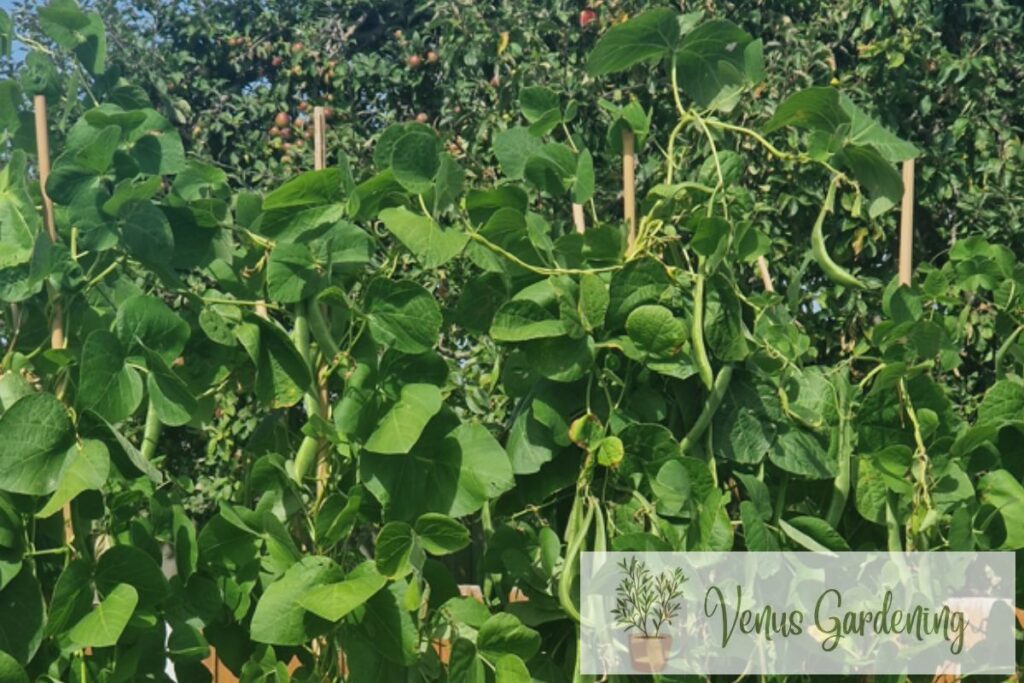
Top Tips For Fertilizing Your Runner Beans
There are a few things to bear in mind in addition to what we’ve already discussed:
The Timing Matters
Fertilizers are best applied during the cooler parts of the day, either early morning or late afternoon. This reduces the risk of burning the plants. Moreover, if using a liquid fertilizer, ensure the soil is moist beforehand to prevent root burn.
Safety First
Always store fertilizers out of the reach of children and pets. And, while gardening, using gloves is advisable, ensuring any direct contact with concentrated nutrients is avoided.
Treading Lightly With Nitrogen
Though indispensable for verdant growth, runner beans have modest nitrogen demands, courtesy of their nitrogen-fixing prowess.
An overdose can backfire, with lavish foliage overshadowing flower and bean production. If your plot is nitrogen-rich, especially after a leguminous crop, you might need to further dial down nitrogen supplementation.
The Intricacies Of pH And Micronutrients
Slightly acidic to neutral terrains (pH 6.0-7.5) are runner beans’ playground. Maintaining this pH sweet spot translates to optimal nutrient assimilation.
Moreover, a myriad of trace minerals encapsulated in comprehensive garden fertilizers underpins the plant’s overall well-being.
Organic Versus Synthetic Fertilisers: The Showdown
The fertilizer landscape is polarised between organic and synthetic variants.
While the former, like compost or seaweed concoctions, dispense nutrients gradually and bolster overall soil health, the latter offer nutrients in tailor-made, swift doses.
For runner beans, both can be triumphant, though the sustained soil betterment from organic choices is a compelling argument.
The Impact Of Watering On Fertilisation
Water is the unsung hero in the fertilization saga. It not only quenches the plant’s thirst but also mobilizes and delivers nutrients to the roots.
When using water-soluble fertilizers, ensure uniform watering to distribute nutrients evenly. Overwatering, on the flip side, might leach away these vital nutrients, diluting your fertilizing efforts.
Harnessing Companion Plants for Nutrition
Nature is replete with symbiotic relationships. Planting companions like marigolds or nasturtiums near runner beans can deter pests. But did you know some plants can enhance soil fertility? P
Plants like borage, reputed to release trace minerals, can be invaluable neighbours for your beans, fortifying the soil naturally.
Final Thoughts
Runner beans, with their distinctive nutrient palette, beckon a nuanced fertilizing strategy.
By accentuating phosphorus, potassium, and a medley of trace elements while dancing lightly with nitrogen, one can usher in a harvest that’s both abundant and flavoursome.
Observing, analyzing, and iterating remain the cornerstones of effective gardening.
With this enriched fertilizing blueprint, your runner beans are poised to be the garden’s showstopper!
- Can You Grow Bell Peppers Indoors? A Guide For New Gardeners - November 14, 2023
- Composting Basics: Can You Compost Mushrooms? - November 6, 2023
- A Gardener’s Guide To Growing Carrots In Raised Beds - November 1, 2023

